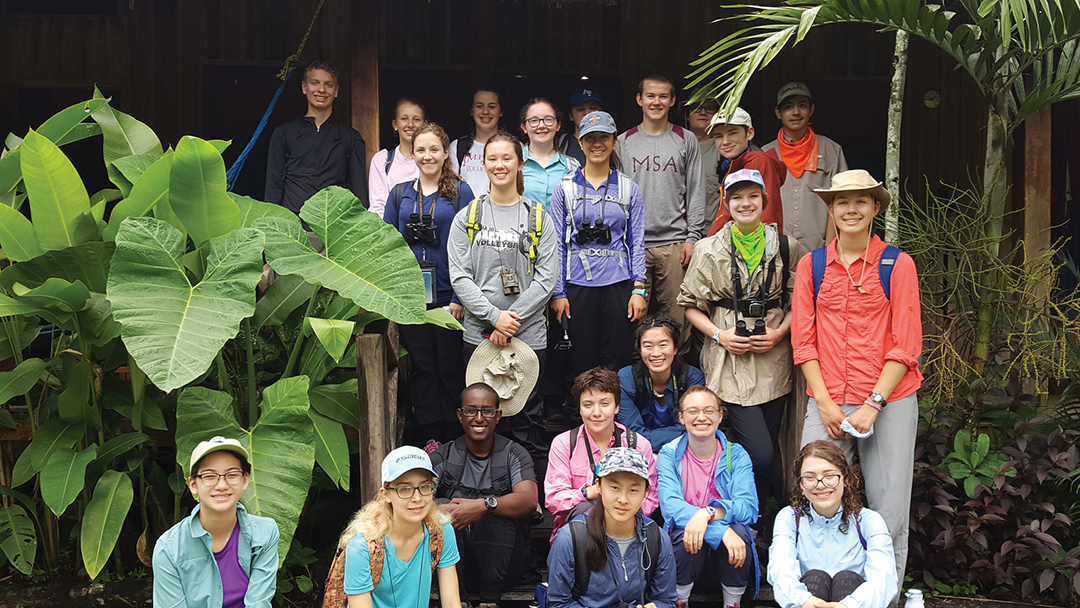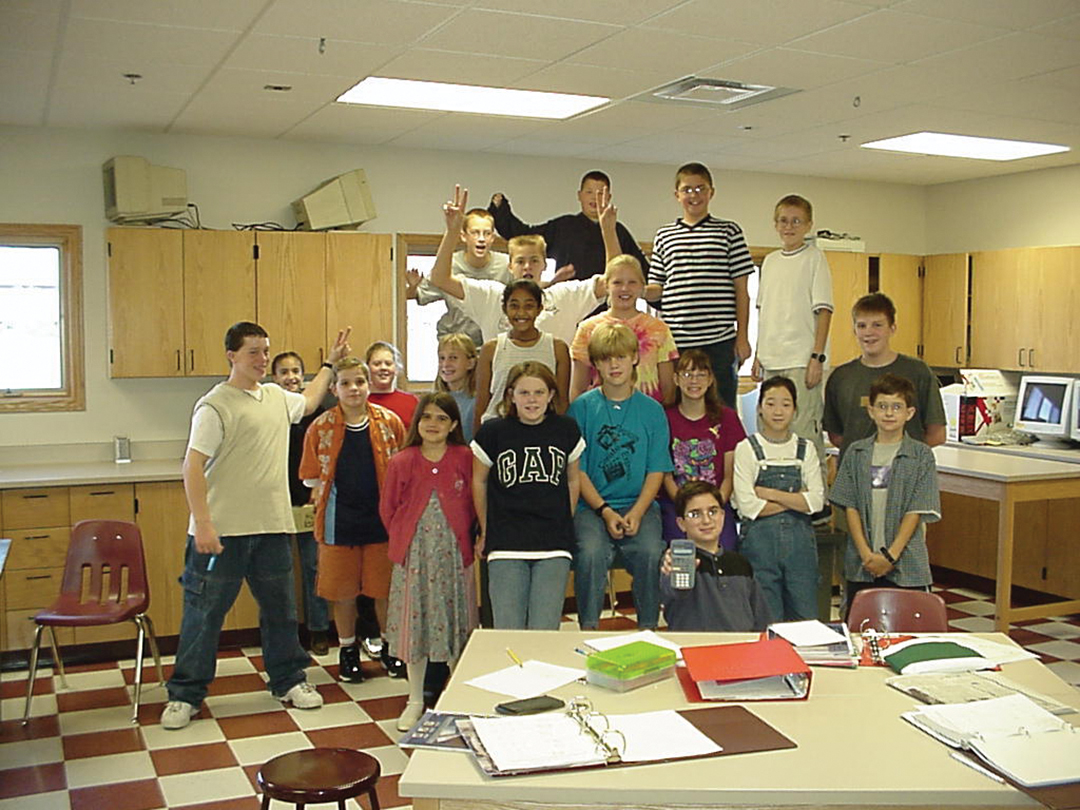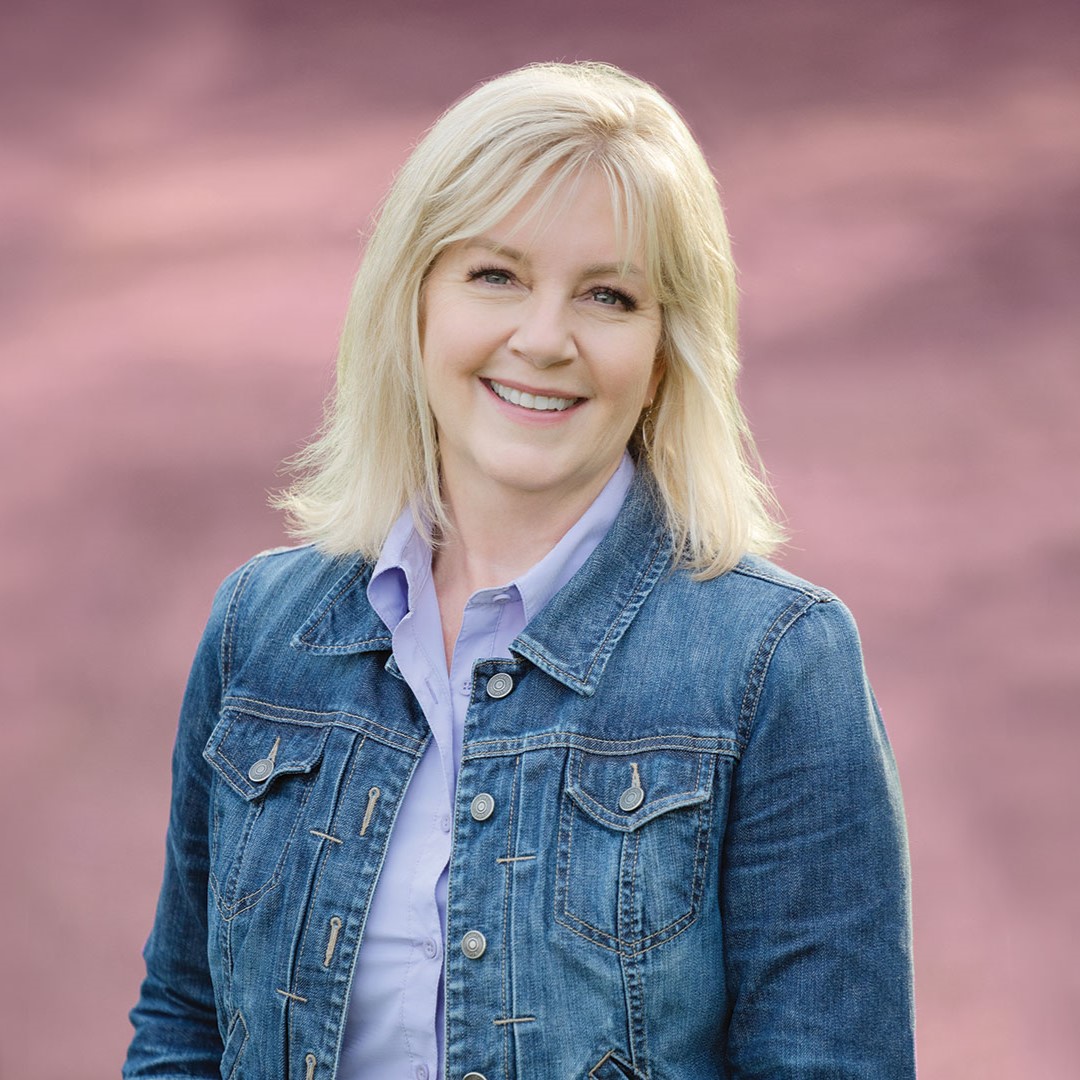
A summer trip to Belize in 2017, organized by Math and Science Academy (MSA) science teacher Jeana Albers, to study ecosystems. Photos: Math and Science Academy
Striving for excellence: It’s something we all do in our own way, but rising to the top and becoming the best often takes a long time. Math and Science Academy’s (MSA) claim to fame, however, came after only 25 years, landing the number one spot on Minnesota’s list of best high schools. The public, tuition-free charter school in Woodbury prides itself on providing students in grades six through 12 an exceptional education focused on math, science, humanities and language.
MSA first opened its doors in 1999 with only seven teachers and 181 students. One of MSA’s founding teachers, Maggie Burggraaff, has been on staff since the early years. “MSA has changed a lot,” Burggraaff says, “At first, our building wasn’t quite ready yet, so we spent the first two and half months in a warehouse.” Since then, MSA has continued to evolve and now encompasses four buildings, over 40 teachers and close to 700 students.
So what’s the secret sauce in preparing students for academic success? And how did a relatively young school climb to the top while continuing to provide a first-class education to countless students? Executive director Kate Hinton chalks it up to the culture that students and staff contribute to, specifically the desire and drive to learn. “The students who select this school really like math and science and want rigorous instruction,” Hinton says. “They appreciate the lack of distraction and that they can go into the classroom and engage in learning. They’re all on the same page about the goal, and that’s what makes it special for the teachers, too.”
In addition to instructing highly focused students, MSA teachers have a special role in how the school functions. “MSA is a school where teachers get to be a part of the decision-making process and have a voice on the board of directors,” Burggraaff says. And in the most recent staff survey, 100 percent of MSA teachers agreed that there’s a positive culture at the school.
Despite the ever-growing number of students enrolled and waitlisted, MSA prioritizes smaller class sizes, typically 20 students on average with the largest class at 25, and graduating class sizes range from 70 to 115. Intentionally keeping classes small allows students to receive more individualized instruction. “When a student really wants to know more about something, it’s much easier to dig deeper,” Hinton says.

Ken Thielman’s middle school math class in 1999, MSA’s first operating year.
One of MSA’s first students, Justin Gehring, who graduated in 2003, echoes similar sentiments about his experience. “When I was a student at MSA, it felt like I determined what my education would be,” Gehring says. He was one of many students who appreciated MSA’s unique willingness to try new things, adapt and react, and find the methods and strategies that work best for the students. “It doesn’t have to be a one-size-fits-all approach,” says Gehring, a current IT support consultant at MSA.
Smaller class sizes also foster a sense of collaboration. Current student David Musherure has been at MSA since 2018 and is heading into senior year this fall. “When it comes to collaborative learning, this works in our favor,” David says, “I’ve had to learn how to work with other people, and throughout many projects and assignments, collaboration is something I’ve grown to enjoy.”
Although MSA students must be disciplined in their studies, there are plenty of extracurriculars to participate in, build community and hone new skills. “We can cater to what the students want and be responsive to their interests,” Hinton says. “Robotics is hugely popular, but so is theater. We have something for everyone.” MSA and East Ridge High School share a robotics lab and collaborate on projects—when not participating in friendly competition, that is.
Current students thrive by having after-school activities they are passionate about to fully immerse into the MSA culture. “The feeling of going to a creative outlet after a long day of work is unmatched,” David says. “I’ve also created some of my closest friendships through those activities.
With expansion on the horizon, MSA hopes to double capacity for students in grades six through 12 in a new building that will still fall in the 833 district boundaries. In addition, MSA envisions using the current building to welcome 450 elementary students, though a slow opening and growth are planned to ensure proper preparations and support for students and staff.
In the meantime, it’s all about anniversary celebrations. “We are preparing for a year of celebration, starting this summer and going the whole next year,” Hinton says. Anniversary celebrations include a summer picnic for current students and graduates to bring together all the people who have made MSA so special. “We’re standing on the shoulders of giants,” Hinton says. “It’s a celebration of who we were and who we’ve become.”
Math and Science Academy
8430 Woodbury Crossing; 651.578.7507
Facebook: Math and Science Academy






















